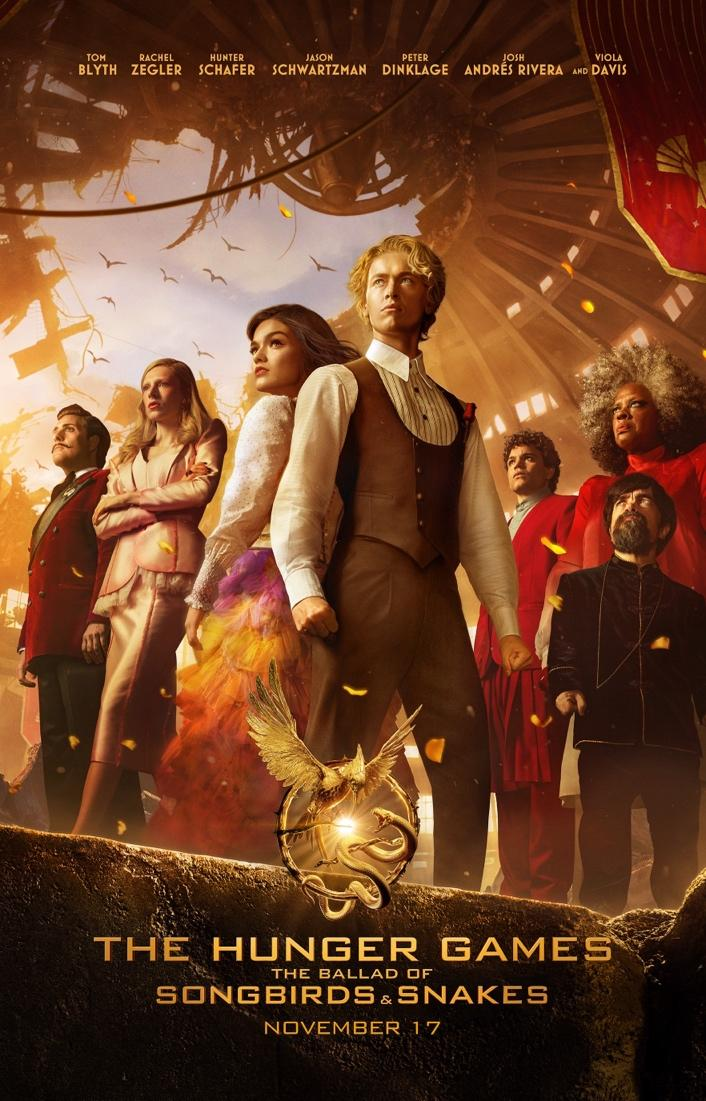WARNING: Major “The Hunger Games: The Ballad of Songbirds & Snakes,” spoilers ahead.
“The Hunger Games: The Ballad of Songbirds & Snakes,” was released Friday, November 17 with a run time of 2hrs and 45mins. Originally based on the book written by Suzanne Collins in 2020, the movie is a prequel to the “Hunger Games” franchise, following 18-year-old Coriolanus Snow – the main antagonist and future President of Panem. The movie focuses not only on Snow’s motives and slow rise to power, but the history and development of the Hunger Games.
The movie follows the 10th annual Hunger Games, which is significantly different to the 74th annual Hunger Games where we see the characters, Katniss Everdeen (Jennifer Lawrence) and Peeta Mellark (Josh Hutcherson). We see the transition of the games from serving as a punishment to the districts for starting a rebellion against the Capital to the games having an entertainment component in the later years. The difference in the games was startling and eerie as the games are more brutal and dehumanizing. For instance, the tributes were put on display in a cage at a zoo without food, where the citizens of the Capital are encouraged to come and observe them. The huge and dense arenas are contrasted with the smaller and simplistic arena we see in the movie. The time between the reaping and the Hunger Games is condensed with there being aspects of the Games that are present in the original trilogy that are missing, like the training period for the tributes.
These changes coincide with the dilemma that the Games haven’t been grabbing the attention of the citizens in the Capitol. This dilemma, introduced by Head Gamemaker, Dr. Volumnia Gaul (Viola Davis), prompts Snow to introduce ideas that would make the games more entertaining for viewers. We see how the first stages of ideas like sponsorships, mentors, and donations, all that played a significant role in the original movies, are only now being introduced and further developed. The interviews before the Games are also established to get the citizens in the Capitol to care more about the fate of the tributes, a ploy to get and keep the attention of viewers.
The movie does seem fast paced at times, with some characters needing to be more fleshed out. Additionally, the movie does lose the internal monologue from Snow’s character in the book. However, this could also be an advantage as it allows the audience to consider Snow’s actions and relationships with other characters as manipulative or genuine. The movie investigates themes of human nature, the purpose of the games and how the games can strip away a person’s agency and morality.
Anyone who loves Hunger Games will enjoy the movie, with Tom Blyth (Coriolanus Snow) and Rachel Zegler (Lucy Gray Baird) portraying their respective characters convincingly. Tom Blyth successfully captures Snow’s mannerisms and psychological aspects to deliver the villain we know so well. Rachel Zegler’s voice highlights the lyrics behind the songs she sings, all while depicting the parallels between her character and Katniss.
Overall, “The Hunger Games: The Ballad of Songbirds & Snakes” captures the audience, as the movie is entertaining and interesting. An unreliable narrator like Snow leaves many unanswered questions and things left to interpretation, allowing the audience to digests the events and characters for themselves. There is no requirement to watch the main movies before seeing the prequel, but there are some small details that might be missed, like the significance and background of the white rose, and the symbolism of the song “The Hanging Tree” sung by Lucy Gray that we see Katniss sing in the later movies. The movie is a must watch and recommended to anyone – first timers and Hunger Games fans alike.











